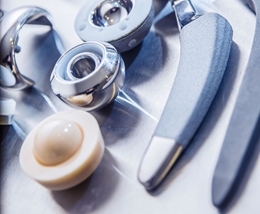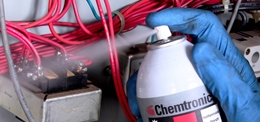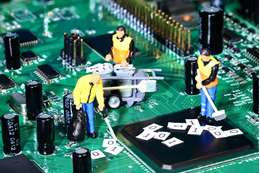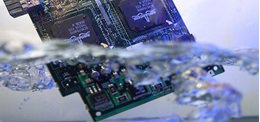Flux-Off Tri-V
Extra strength, nonflammable flux remover for replacing n-propyl bromide
The Ultimate n-Propyl (nPB) Replacement
Flux-Off Tri-V Flux Remover is an extra strength nonflammable solvent that removes heavy and encrusted flux deposits. This solvent system is engineered to remove all types of flux types while evaporating quickly and leaving no residues. Tri-V replacement chemistry is an innovative new chemistry that does not contain any n-propyl bromide, TCE or any ozone depleting compounds.
CLICK HERE FOR FLUX REMOVER SELECTION GUIDE
Features & Benefits
- Nonflammable, can be used on energized equipment
- Powerful cleaning agent to remove R, RA, RMA, and synthetic fluxes
- Removes encrusted fluxes and white residues
- Penetrates to clean hard to reach areas
- Evaporates quickly and leaves no residues, minimizes down time
- Does not contain n-propyl bromide, trichloroethylene, or perchloroethylene
- Stabilized for metals such as aluminum, magnesium, titanium, and brass
- Noncorrosive, safe for sensitive metals
Applications
- Chip Carriers
- Heat Sinks
- Metal Housings and Chassis
- Printed Circuit Boards
- Plugs
- Relays and Contacts
- Sockets
- Surface Mount Device Pads
- Switches
| TDS | |
| REGS | |
| SDS | |
| Categories |
Vapor Degreaser Setting Guidelines
- Boiling point – 118°F / 48°C
- Boil sump temp set – 127°F / 53°C
- High solvent temp set – 136°F / 58°C
- Refrigerant high temp set – 109°F / 43°C
Note: As with all vapor degreaser equipment and processes, observe all safety precautions, guidelines and operating rules associated with these units. Failure to do so may put operations personnel at risk. Avoid excessive vapor losses, loss of refrigeration, excessive boil sump heat, etc. Make sure all equipment is operated in accordance with the manufacturer’s guidelines and instructions. If in doubt, contact your manufacturer immediately.









